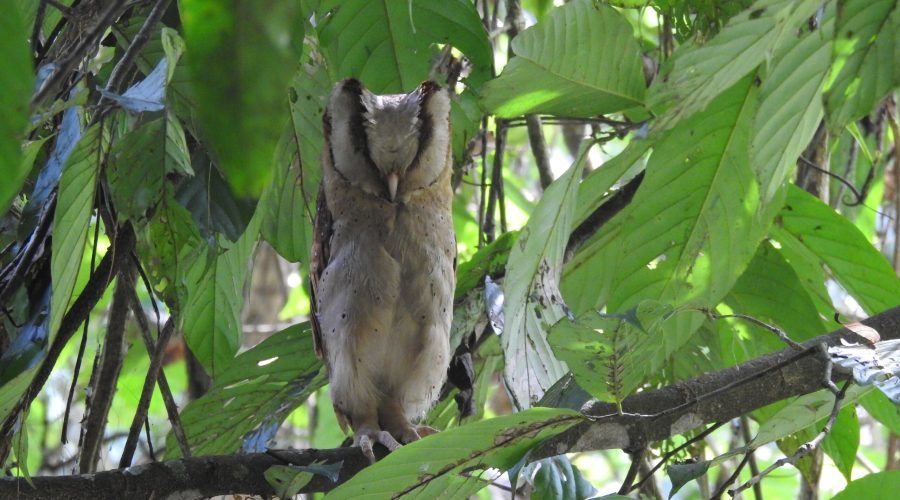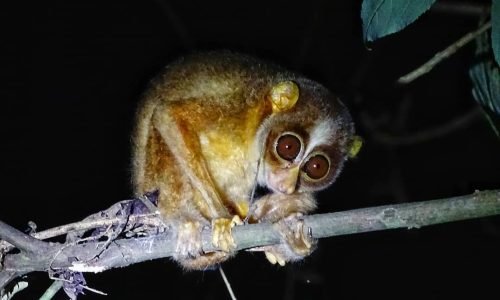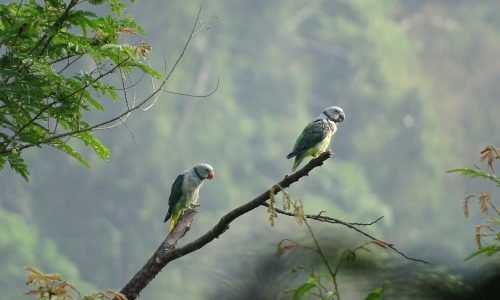During this tour, you will explore three remarkable wildlife destinations: the Salim Ali Bird Sanctuary in Thattekkad, the Periyar Tiger Reserve, and the high-altitude hills of Munnar – each of which hosts some of the most spectacular bird populations in the country.
Kerala, with its verdant landscapes and unique biodiversity, stands as one of India’s premier wilderness destinations. The state’s forests are a sanctuary for a variety of endangered and endemic species, both avian and mammalian, thriving in its diverse ecosystems, which range from tropical rainforests and moist deciduous woods to grasslands and wetland habitats. The harmonious relationship between the region’s natural beauty and its wildlife has created a rich tapestry of life, making Kerala a paradise for birdwatchers, hikers, and anyone seeking a close connection with nature.
The journey begins at Thattekkad, a small yet bird-rich sanctuary named after Dr Salim Ali, the ‘Birdman of India’. The sanctuary is located along the banks of the Periyar River, where a mix of tropical rainforests, riverine forests, and teak plantations creates an ideal habitat for a variety of bird species. The lush tropical rainforests of Thattekkad are home to several endemic species of the Western Ghats, such as the Malabar Parakeet, White-bellied Treepie, and Malabar Grey Hornbill, making it a haven for bird enthusiasts. The sanctuary’s compact size ensures high-density birdwatching opportunities, making it an unforgettable experience for nature lovers.
Next, the adventure continues to the Periyar Tiger Reserve, one of Kerala’s largest and well-preserved protected areas, spanning over 777 square kilometres. This reserve offers a mix of habitats, from dense evergreen forests to moist deciduous woodlands and open grasslands. Named after the Periyar River that flows through it, the reserve is home to some of the rarest birds in southern India. The vivid Malabar Trogon, while the Grey-fronted Green Pigeon, Rufous Babbler, and Wayanad Laughingthrush are highly sought-after species found in the deeper forests. Periyar’s dense forests also supports a rich mammal population, including Indian Elephants, Sambar Deer, and Indian Gaur. Most remarkably, the reserve boasts over 40 Bengal Tigers!
The final leg of the journey brings you to Munnar, a high-altitude paradise nestled in the Western Ghats. Known for its breathtaking landscapes, rolling tea plantations, and cool climate, Munnar is surrounded by Shola forests – montane evergreen forests interspersed with grasslands. These unique habitats support a variety of endemic birds, such as the Nilgiri Wood Pigeon, Nilgiri Flycatcher, and the striking Black-and-Orange Flycatcher. Additionally, rare birds like the Nilgiri Pipit, Nilgiri Thrush, Painted Bush Quail and White-bellied Blue Robin can be found here, making Munnar a true birder’s delight.
Kerala’s wilderness offers a diverse and unparalleled birdwatching experience, allowing exploration across varied landscapes. Whether you are traversing the lowland rainforests of Thattekkad, the sprawling expanses of Periyar, or the misty, montane hills of Munnar, each destination offers something distinct and extraordinary, leaving you with unforgettable memories of nature’s abundance.



